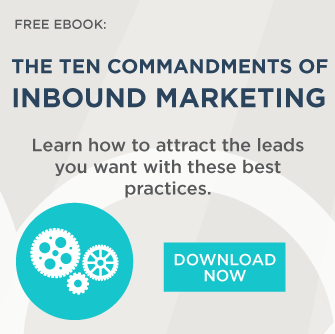Are You Keeping Both the Decision Maker and Decision Influencers in Mind?
For many businesses, the primary person that is focused on in both marketing and sales efforts is the key decision maker at a company. It’s easy for...
2 min read
 Dean Moothart
:
January 20, 2020
Dean Moothart
:
January 20, 2020


Most salespeople are always looking for an edge. They’re looking for new ideas and tactics that can help them improve their performance. However, they severely underutilize the resources they have at their disposal.
Marketing departments invest significant resources developing content to help support the marketing strategy and generate leads. Sales and marketing teams are both working towards the same goal, securing business and helping the company grow.
 This marketing content comes in the form of blog articles, eBooks, case studies, whitepapers, webinars and videos.
This marketing content comes in the form of blog articles, eBooks, case studies, whitepapers, webinars and videos.
This same content can often be leveraged by the sales team to support their prospects’ buying journey and accelerate deals through the funnel. The problem is that most salespeople don’t know these resources exist, don’t know where to find them, or don’t know how to use them.
Establish and reinforce your personal brand as a thought leader and subject matter expert by regularly sharing your company’s blog articles with your social media networks. LinkedIn (where you should be making connections with your prospects) is especially effective. Don’t just hit the “share” button. Write a few sentences to introduce the topic and share your unique perspective. Better yet, contribute to the blog and share articles that you’ve written.
You can further promote the content you share by embedding links to blog articles and other digital content in your email signature.
Always include at least one call-to-action (CTA) link in every prospecting email. It can be a link to a blog article or to a landing page to download a whitepaper or eBook. Find content that is relevant to your email message and make it easy for them to find.
We all hear objections in the sales process. After you’ve addressed them in your meeting or call, send links to blog articles or other content that provides additional detailed information that addresses their objections.
Build email sequences that share relevant content to nurture long-term “not-ready-to-buy-yet” opportunities. Just because a prospect isn’t ready to buy today doesn’t mean they won’t be a big new deal next quarter or even next year. Stop sending the “checking in” email. Instead, nurture your prospects with relevant content that informs; and educates; and keeps you top-of-mind until they’re ready to take the next step.
Sometimes a financial decision-maker may direct you to talk to end-user influencers or a lower-level influencer may be your champion and introduces you to the decision-maker. Use the same approach used to nurture prospects to keep the door open with your original point-of-contact and build those relationships.
Sending case studies when you are in the proposal presentation stage can reinforce your solution recommendation and help respond to objections before they are even verbalized.
If you’re in marketing or sales leadership and your sales team isn't using the resources at their disposal, then you may want to think about building out sales plays for them to use. Sales plays are prescribed courses of action for various sales scenarios — just like in a football game, the quarterback will call a play.
The play that’s called depends on the score; how much time is left; where the ball is on the field; the defense formation, etc. Similarly, depending on the sales situation; the stage in the sales process; the level of decision-maker, the type of company, etc., you can call a play for the salesperson to run that will produce success. That play can include call guides, voice mail scripts, email templates, social media posts and recommended content to share.
Sales plays are great ways to not only encourage your team to use the resources they have at their disposal, but also, they help take the best practices that exist in pockets throughout your sales organization and make them repeatable and scalable.

For many businesses, the primary person that is focused on in both marketing and sales efforts is the key decision maker at a company. It’s easy for...

Whether you run a single TV station in a top 10 market or multiple radio stations in a mid-size market, or really anything in between, there are some...

The most important role I have as a Consultant at LeadG2 is helping ensure my clients see ROI from their inbound marketing investments. However, as...